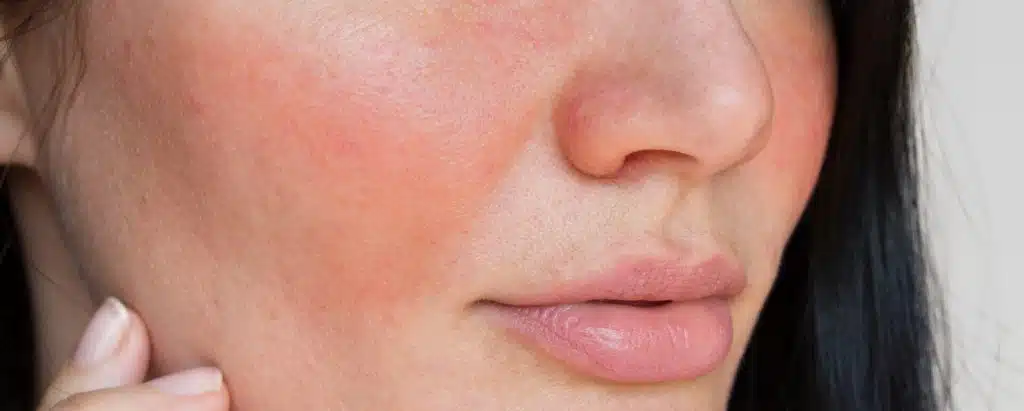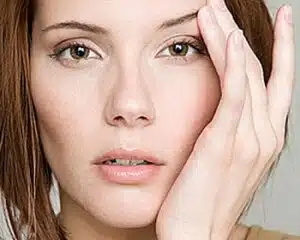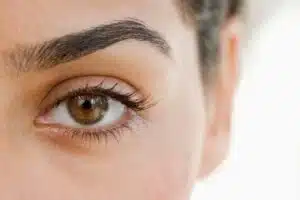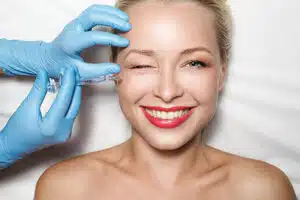What is rosacea, what causes it and how can it be treated? Dr.Weksberg, dermatologist in Dermapure Toronto clinic answers these questions and more in this interview about this condition that affects a lot of people.
What are the different types of rosacea, and can people have more than one at a time?
The appearance of Rosacea may vary from person to person. Some individuals can start with one type of Rosacea, and then may go on to acquire a different form of the condition. Some patients have multiple forms at the same time.
Rosacea may be classified with the following subtypes:
- Erythematotelangiectatic
- Papulopustular
- Rhinophyma
- Ocular Rosacea
In the erythematotelangiectatic type the face is red, flushes red easily, and is associated with the appearance of many small telangiectasias (small blood vessels). Flare ups are common, but sometimes the redness may fade by itself. The papulopustular type that looks more like acne, where one sees red pimples and little white pustular pimples. Many people have types 1 and 2 at the same time. The third type called Rhinophyma is a more chronic inflamed condition, causing a thickening of the skin of the nose. It typically presents with enlargement of the nose, with a bumpy surface. This has often been mistakenly viewed as a feature of alcoholism. The fourth type, Ocular Rosacea affects the eyes.

What causes rosacea?
The cause of rosacea is essentially unknown. Some of the theories include a change in the immune system, a change in the blood vessels that make them more reactive, an effect from an organism called Demodex folliculorum, a very tiny parasite invisible to the eye that lives on the skin.
How is rosacea diagnosed?
It can be diagnosed clinically by a primary care physician. There are instances where it is misdiagnosed because the signs and symptoms can be mixed up with other conditions. Sometimes a dermatology consultation is necessary to sort out the skin eruption.
How to tell the difference between a symptom of rosacea and menopause such as flushing?
In these cases, it may be a little bit harder to diagnose. A woman going through menopause will usually report that she feels hot, with the associated red flushing. After a short period of time the signs and symptoms typically disappear. Menopausal women seldom have the multitude of telangiectasias seen with Rosacea.
How can we treat rosacea?
Treatment of Rosacea will vary depending on the patient’s presentation. For redness and flushing, there are products to use to help to reduce inflammation, like the ones included in the Functionalab Redness Protocol that is available at our clinic. Intense Pulsed light and Candela Vbeam laser can provide beneficial results. These lasers can close the blood vessels and reduce redness. The number of treatments is dependent on how severe the condition is. For papulopustular Rosacea we have other products in the clinic such as CODE as well as prescription topical creams and sometimes oral medications.

Can rosacea be cured?
There is no cure for Rosacea. All the treatments can help to keep it under control. It can
sometimes go away completely, indicating it is in remission rather than a cure. There is always a possibility the Rosacea may recur. In patients having Rosacea due to makeup or moisturizers, eliminating these products may produce a “cure”.
What is the difference between rosacea and couperose?
Rosacea and couperose are two different conditions. Couperose is a vascular condition where veins of various sizes become prominent and persistent, but there is no inflammation and no papules or pustules. A variety of factors such as genetics and chronic sun damage can cause this condition. The vascular changes in Rosacea involve mainly small blood vessels and telangiectasias.

What are the repercussions on the daily life of those affected?
Self-image is a very important thing not only with Rosacea but for someone who has
imperfections on the face; it can affect people greatly. Some can be so embarrassed that they won’t want to go out or go to school and may go into depression. It can be very hard, especially in bad cases and can affect people’s lives tremendously.
What would be the triggers or the things that would worsen the condition?
There are certain things in the diet that can trigger Rosacea. Spicy food, caffeine, alcohol, and hot beverages. Emotional stress, sun, heat, and wind exposure are among some of the factors that can trigger Rosacea as well. Certain cosmetics like oil based makeup and creams can also be a trigger.

What would be the proper skincare for people with rosacea?
It is important to maintain the skin barrier and to keep the skin moisturized, therefore we recommend using a light moisturizer, a gentle cleanser, and a light sunscreen. Oily moisturizer and makeup should be avoided as it can be a trigger for Rosacea. There are also specific products that can be used as treatment, but in general, a good skincare routine is important to start with.






